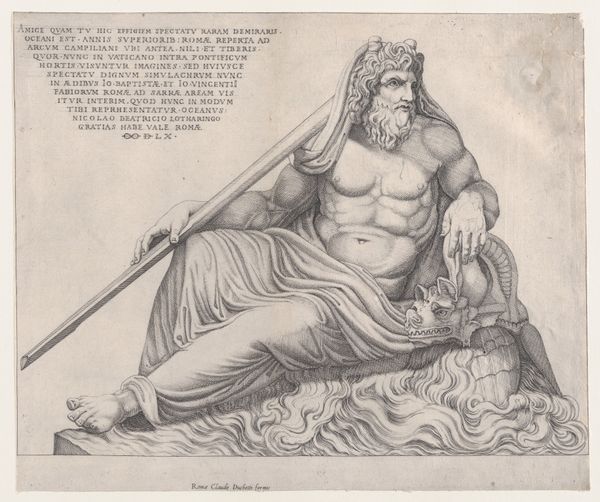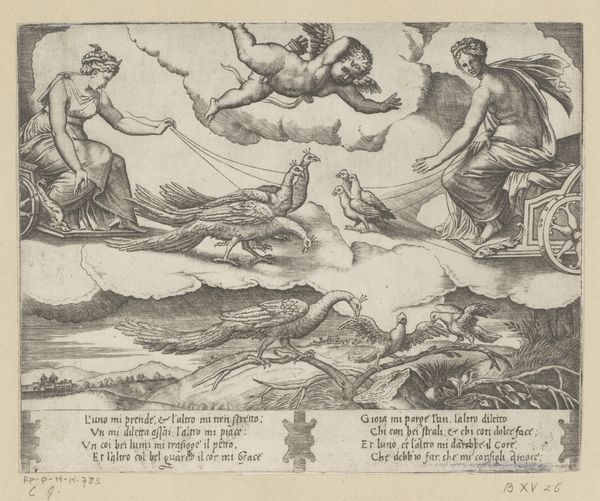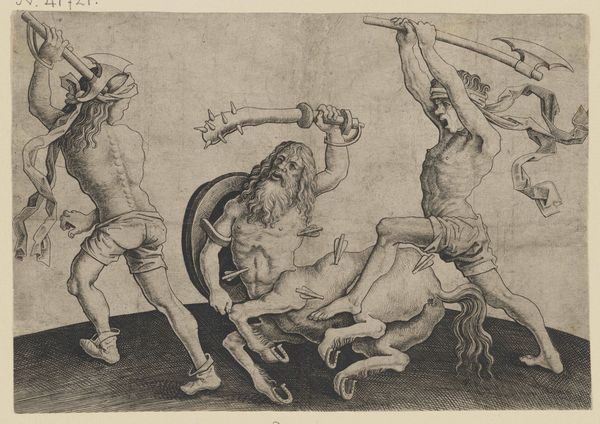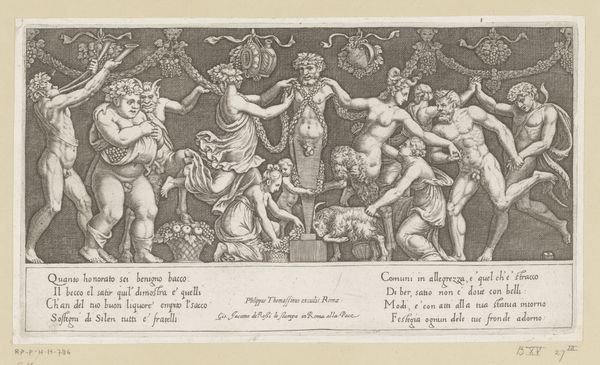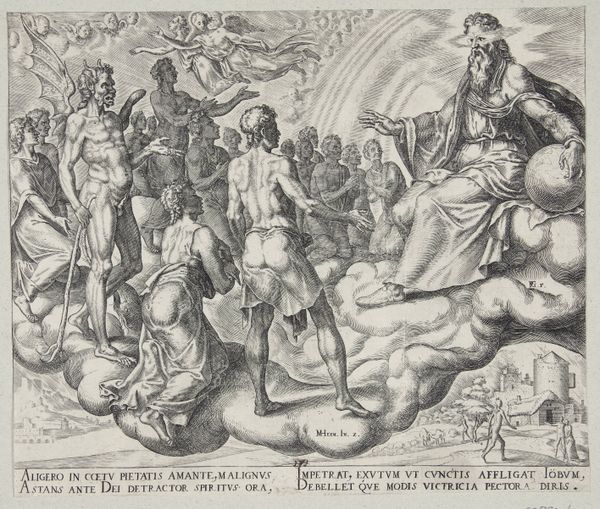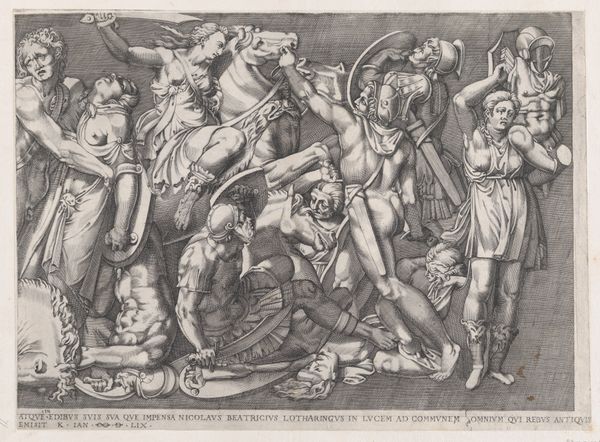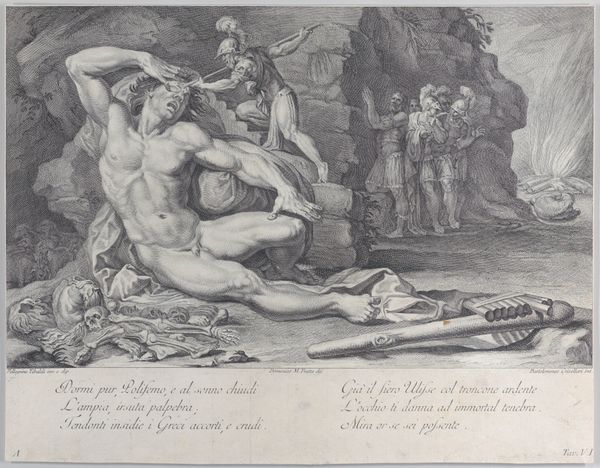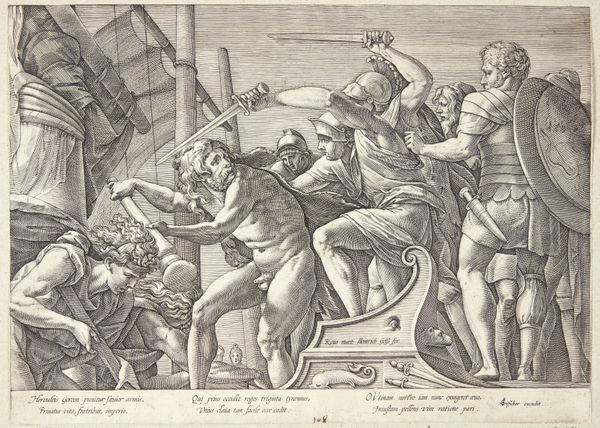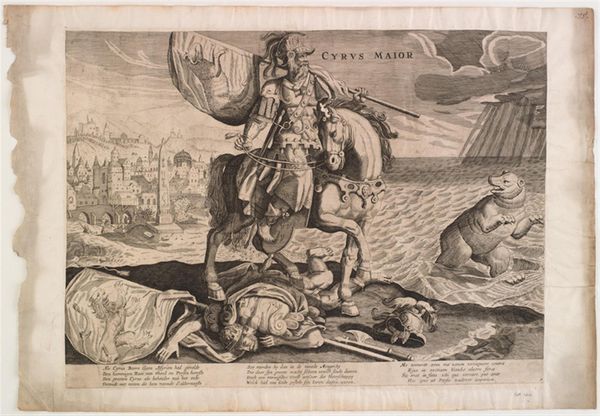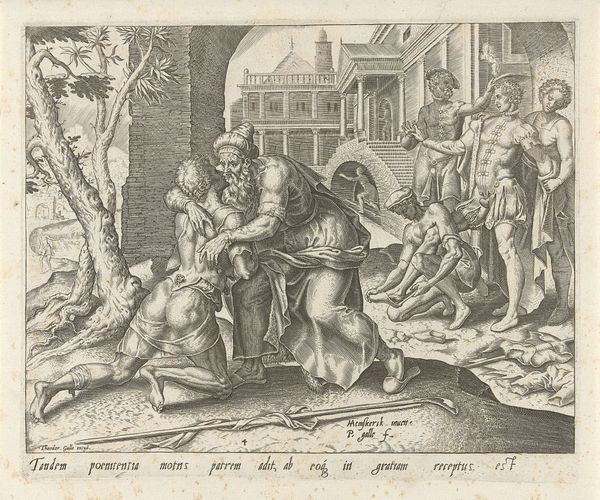
Speculum Romanae Magnificentiae: The Nile 1520 - 1566
0:00
0:00
drawing, print
#
portrait
#
drawing
#
animal
# print
#
11_renaissance
#
child
#
men
#
italian-renaissance
Dimensions: sheet: 13 x 21 1/16 in. (33 x 53.5 cm) plate: 18 5/16 x 21 1/16 in. (46.5 x 53.5 cm)
Copyright: Public Domain
Nicolas Beatrizet made this engraving of the Nile, sometime in the mid-16th century. It's an ink-on-paper print – a relatively accessible medium, but one that still requires significant skill. Notice how the density of the lines creates a sense of volume, defining the muscular god of the river and the many figures that swarm around him. The image is crisp and precise, a testament to the engraver's technique. Engraving, unlike other printmaking methods, is an intaglio process. The artist uses a tool called a burin to carve directly into a metal plate. The lines are then filled with ink, and the image is transferred to paper under high pressure. This process allows for extremely fine detail and control, but it is also slow and labor-intensive. Beatrizet would have likely been a trained professional, working in a workshop. Prints like this one facilitated the spread of knowledge and artistic ideas – but they also depended on a complex system of production and distribution. Considering the artistry and labor involved in creating this print, we can appreciate the depth of its cultural and historical significance, and move beyond traditional distinctions between art, craft, and industry.
Comments
No comments
Be the first to comment and join the conversation on the ultimate creative platform.
